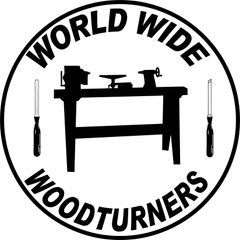… Continued from March 19, 2025 Newsletter
Health and Safety Considerations: Engraving with Confidence and Caution
While laser engraving is an incredible tool for adding intricate details and personalization to wood-turned projects, it’s important to recognize that you’re working with a powerful beam of focused energy— essentially controlled fire. That means safety should always be a top priority.
Unlike traditional woodworking tools that involve physical contact, a laser engraver applies intense heat to the wood to vaporize the surface and create designs. While this process is safe when done correctly, it also produces smoke, fine dust particles, and potentially hazardous fumes. Additionally, if not properly monitored, the laser’s heat can ignite wood, catch flammable materials on fire, or cause burns.
To ensure that your laser engraving experience is both safe and efficient, it’s essential to follow these best practices.
Proper Ventilation is Essential: One of the most overlooked aspects of laser engraving safety is air quality. Since lasers burn wood to engrave designs, the process produces smoke, fine particulates, and fumes—some of which can be harmful if inhaled. Without proper ventilation, these airborne particles can linger in your workspace, causing respiratory irritation, eye discomfort, and potential long-term health risks.
To maintain a clean and safe working environment, consider the following ventilation solutions:
- Use an exhaust system – If you’re working indoors, install a dedicated fume extractor or an exhaust fan-and-duct system that vents smoke outside. Many commercially available laser enclosures come with built-in exhaust ports for this purpose.
- Work in a well-ventilated area – If you don’t have an exhaust system, ensure you’re working in an area with good airflow, such as a garage with open doors or near windows equipped with fans.
- Use an air filtration unit – A HEPA filter or activated carbon air purifier can help capture fine particles and reduce lingering odors from the engraving process.
- Enclose the Laser Engraver – If possible, use a laser enclosure to contain smoke and fumes while also improving safety. Many enclosed laser systems come with built-in extraction systems, reducing the amount of airborne residue in your workshop.
Enclosures serve multiple benefits:
- They prevent smoke from dispersing freely into the workspace.
- They help direct fumes toward ventilation systems more effectively.
- They add an extra layer of safety, keeping stray laser reflections contained.
Warning: Never engrave indoors without proper ventilation. Working in an enclosed, poorly ventilated space can lead to smoke buildup, reducing air quality and creating a potential fire hazard.
Additionally, the type of material you engrave plays a role in air quality. Some materials, like plywood, MDF, and pressure-treated wood, release toxic fumes when burned.
Avoid engraving:
- MDF (Medium Density Fiberboard) – Contains formaldehyde-based adhesives that release dangerous fumes.
- Pressure-treated wood – Contains chemicals that can be hazardous when burned.
- Plastics and synthetic materials – Many plastics release chlorine or other toxic gases when engraved.
Stick to natural woods like maple, walnut, cherry, oak, and birch for the best engraving results with minimal fumes.
By ensuring proper ventilation and using an enclosure, you can minimize health risks, reduce smoke exposure, and create a safer, cleaner workspace for your laser engraving projects.
Protect Your Eyes and Skin: Even though most consumer laser engravers don’t emit visible beams that can burn skin, laser exposure can still be dangerous. Some engravers use infrared or ultraviolet light that is invisible to the human eye, meaning you won’t feel the damage until it has already occurred.
To protect yourself:
- Wear laser-safe goggles – If your engraver is open-frame (not enclosed in a housing), laser safety glasses are essential. These goggles protect against accidental laser exposure.
- Avoid looking directly at the laser beam – Even indirect reflections from certain surfaces can be harmful to your eyes.
- Don’t place your hands near the engraving area
– While most engravers have safety mechanisms to prevent accidental burns, it’s best to keep hands clear of the laser’s path.
- Wear gloves if handling hot materials – Some woods retain heat after engraving and can cause burns if touched immediately after the process.
Warning: Never operate a laser engraver without checking if you need eye protection. Some machines (especially high-powered diode or fiber lasers) can cause irreversible eye damage even from brief exposure.
To be continued in the April 9, 2025 Newsletter
